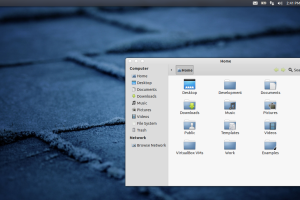Well, my first month of school is coming to a close and I’m drowning.
It’ll be better next semester, when I won’t have any more chemistry labs to do. That class is an unbelievable time sink, I figure I must spend 30 hours on it alone in the last week. Top that with work and three other classes that all have their own lectures, readings, assignments, discussion groups, and lab sessions. It’s a lot!
When I do have spare time, I bake. It doesn’t require thinking. It produces instant results. I end up with goodies. It’s unlike anything I do in university. On that note, I’ve been trying to find a baked doughnut recipe. I’ve tried four of them.
Pictured above is the result of a baked French Crueller recipe. The inside was as you’d expect – soft and fluffy. The outside was tough, a product of baking instead frying. It wasn’t terrible, but I don’t think I’d do this one again.
Next up was a yeast-based baked doughnut recipe. The end result was very dense, almost bread-like. I’m not sure if this was because of the recipe, or because of my (lack of) skills. The nice thing about that recipe though is that it doesn’t require a doughnut pan. Not bad, but not quite doughnut-like.
I then stumbled on a new recipe. I had the bright idea of trying it while significantly inebriated. The result tasted like baking powder. My ability to measure quantities is always the first casualty of my alcohol consumption.
I promptly tried the new recipe for baked doughnuts again, albeit after sobering up. I also picked up a doughnut pan for this one. The results were great. This was it! A baked doughnut that rivalled the fried variety.
I’m going to keep trying new recipes, but I’m really content with this last one.
Update #1: I’ve tried a recipe for baked snickerdoodle doughnuts, pictured below. Good results but I have to say that I still prefer that other recipe.
Update #2: I made cinnamon roll doughnuts, shown below. The flavour, which really is reminiscent of a cinnamon roll, makes this one a keeper.
Update #3: I made doughnuts for a post-Thanksgiving dinner, using two recipes discussed here and this new one for baked cinnamon vanilla doughnuts. This latter recipe tasted good, though the end product didn’t expand as nicely as I would have hoped. I think so far I’m still favouring the baked cinnamon roll doughnuts and the cinnamon and sugar baked doughnuts.
Update #4: I used the topping from the baked cinnamon roll doughnuts, and used the batter from the cinnamon & sugar baked doughnuts. It’s an excellent combination. It fills out nicely and melts in your mouth as you chew into it. The batter doesn’t absorb the cinnamon roll topping as well as the original recipe though, so it’s not as eye-catching. But there are ways to deal with that.
Update #5: I made vegan gluten-free doughnuts. I followed the same recipe as above, but made substitutions. Flour became Red Mills Gluten-Free All Purpose Flour with two tsp of xanthan gum. Eggs became apple sauce. Butter became Earth Balance spread. Milk became almond milk. Cream Cheese became Tofutti Cream Cheese.
Update #6: I used an entirely new recipe, for baked cake miniature doughnuts. The doughnuts ended up with a crispy sugary exterior that clung to the pan and a cake-like interior. Not bad, but not the best I’ve done either.
Update #7: I made vegan baked maple cinnamon roll doughnuts. They have been the best doughnuts to date. I basically took the cinnamon roll doughnut recipe, made it egg and dairy free, then topped it with a maple vegan cream cheese icing.
 Update #8: I came across a recipe for baked chocolate doughnuts. I halved the portions, which turned out to be a good call as it made 12 mini doughnuts. The end result was pretty decent; they were like bite-sized chocolate cakes.
Update #8: I came across a recipe for baked chocolate doughnuts. I halved the portions, which turned out to be a good call as it made 12 mini doughnuts. The end result was pretty decent; they were like bite-sized chocolate cakes.
Update #9: I made vegan baked maple doughnuts. The recipe was very similar to the vegan cinnamon roll doughnuts, and turned out absolutely delicious. This one is now in my top two doughnut recipe list, along with the said cinnamon roll doughnuts.
 Update #10: I took the baked maple doughnuts recipe and made it gluten-free. I personally prefer the gluten-rich version, but it’s still very delicious!
Update #10: I took the baked maple doughnuts recipe and made it gluten-free. I personally prefer the gluten-rich version, but it’s still very delicious!
Update #11: I made chocolate glazed doughnuts. The result was very cake-like taste and texture. Pleasing but not very doughnut-like in that respect.
Update #12: All the recipes thus far were used with a miniature doughnut pan, with twelve cavities per tray. For this new recipe I utilized the full-size pan, with six doughnuts per tray. I made whole wheat cinnamon sugar doughnuts, substituting Greek yoghurt for sour cream because that’s what I had. These were very good and a definite keeper as a large doughnut recipe.
Update #13: I made vegan brown butter cinnamon sugar doughnuts. They were tasty, being dipped in melted brown butter meant that that was a part of the flavour. Similar to one of the first recipe I ever tried which also dipped the doughnuts in melted butter; hard to say which is better.
Update #14: I made a veganized version of pumpkin spice doughnuts. They were soft and more chewy than cake-like, but nonetheless flavourful and decent.
Update #15: I made vegan cookie dough doughnuts. The recipe for the doughnut portion did not call for any sugar, and on their own tasted very drab. It was just a delivery system for the rich and yummy cookie dough topping. The topping was good, but nonetheless, I don’t think I’d make these again. Or maybe use a different recipe for the doughnut portion, and tone down the topping.


































